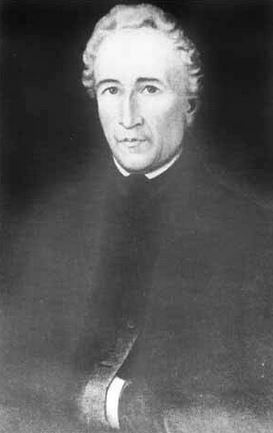Jean-Antoine Lépine (1720-1814), was born in Challex, France near Geneva on the 18th of November 1720. He is considered one of the finest French watchmakers in history. In his early childhood, he showed an aptitude for all things mechanical. He served a watchmaking apprenticeship under the direction of Mr Decroze, manufacturer of Saconnex watches, in Geneva, Switzerland. Clients of Lépine included Louis XV, Louis XVI and Napoleon Bonaparte.
Master watchmaker
He moved to Paris in 1744 when he was 24 years of age and began working for André-Charles Caron (1698–1775), at that time clockmaker to King Louis XV. In 1756 he married Caron’s daughter and worked with him, under the company name of “Caron et Lépine”, between 1756 and 1769. When André-Charles retired around 1770, Lépine continued watchmaking under his own name. He received several awards during his career, including being made a master watchmaker (maître horloger) in 1762. It was around this time that he was known to have worked alongside Abraham-Louis Breguet (1747–1823). The exact nature of their relationship is unknown, perhaps the older Lépine acted as a mentor to the younger Breguet. However, it is known that they had some sort of business relationship as the Breguet archives have records of watches being received from Lépine.
The Lépine movement
Around 1764 or 1765 Lépine, introduced the innovation that made him famous and bears his name. Pocket watches at the time normally had the gear train, the fusee and the verge escapement mounted between two plates. The balance mechanism was mounted on the outside of the top plate. This resulted in a thick design, which was further increased by the addition of an outer case and the crystal. The traditional vertical verge escapement dictated that the balance was situated on the outside or top of the top plate.
To make a thinner and flatter watch that would fit comfortably in a waistcoat pocket, Lépine used a horizontal cylinder escapement instead of the upright verge. This allowed him to move the balance from above the top plate to between the plates so that it was in the same plane as the gear train. Additionally, the cock for the balance staff’s top pivot was fixed to the bottom plate instead of the top plate, with the bottom pivot of the balance staff located in the bottom plate. In 1765 or 1766 (precise date not known), he was appointed Horloger du Roi (Clockmaker to the King).
Manufacture Royale
Lépine was linked with the French philosopher Voltaire and his watch manufacturing enterprise established in 1770 at Ferney, France. Watches were produced in Voltaire’s factory under the brand name, Manufacture Royale. The precise extent of Lépine ‘s involvement in the Ferney operation is unknown. However, it is assumed that we worked as either a technical director or an associate.
Around 1794, Lépine retired when his failing eyesight prevented him from continuing to work. He handed over the company to his son-in-law Claude-Pierre Raguet who had become an associate in 1792. When Raguet died in 1810, his son Alexandre Raguet-Lépine continued the business. However, Lépine continued to be active in the firm until his death on the 31st of May 1814 at his home of Rue St. Anne in Paris. He was buried in the Père-Lachaise cemetery, in Paris, on the 1st of June 1814.
Other inventions
Lépine was also at the forefront of design, and along with Breguet was one of the first to use Arabic numerals on watch dials.
Related content
Jean-Antoine Lépine at Watch Wiki.
